#germania construction
Text
Concrete Slab - Contemporary Patio

Huge trendy backyard concrete patio kitchen photo with a roof extension
0 notes
Photo

Roof Extensions - Transitional Deck
Large transitional backyard second story privacy and metal railing deck photo with a roof extension
#park city builder#mountain transitional#custom home builder#ski home#germania construction#outdoor furniture
0 notes
Text
Early in the morning of October 25, 79 (year 832 in ancient Rome), Pliny the Elder died on the coast of Stabia during the expulsion of the last pyroclastic surge that came out of Vesuvius. The interesting thing is that he is the only ancient writer, and important Roman soldier and politician who died due to a natural disaster. Ironically, his passion was the study of nature. Pliny, born in 23, spent his childhood and teens during the dark reign of Tiberius ( 14-37) whom he referred to as "the saddest of men". He praised the emperor Claudius (41-54) saying that "Claudius was one of the best writers". During the reign of Nero (54-68) Pliny attended the construction of the Domus Aurea, emperor's palace.

Pliny began his military career in Germania. During the reign of Vespasian (December 69-June 79) he was procurator in Gaul and Hispania. Pliny was a close friend of Emperor Vespasian who in 77 appointed him commander of the Roman navy and that is why Pliny settled with his family in Misenum (the same city where emperor Tiberius died) on the coast of the Gulf of Naples, near Pompeii. He tried to help in the disaster but ended up among the victims of one of the most famous and deadly volcanic eruptions in history.

The day of the eruption, the youngest son of Vespasian, brother of the then emperor Titus and who two years later would become emperor Domitian, was celebrating his birthday.
Today we know what happened thanks to Pliny the Younger, also a writer, who documented in detail what he saw from Misenum as well as the testimonies he heard from the survivors in Stabia who were with his uncle.

189 notes
·
View notes
Text
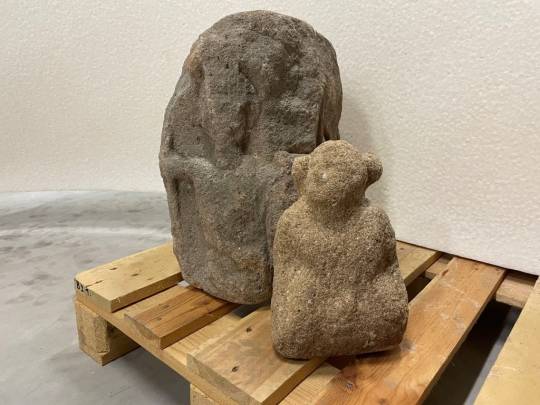
Stone Sculpture of a Roman ‘Giant’ Unearthed at Ancient Fort in Germany
The new find completes another artifact unearthed more than a century ago.
Due diligence in Stuttgart recently unearthed a stone sculpture that was actually part of an ancient Roman monument discovered at the same site more than a century ago. For the past few months, the State Office for Monument Preservation (LAD) has overseen excavations at a plot that had been tapped for the expansion of a local school. From 100 to 150 C.E., this very location hosted an ancient Roman fort, which became a larger settlement 100 years later. Those preliminary excavations paused, a release said, when an employee from the contractor ArchaeoBW spotted “a rather inconspicuous, mud-smeared sandstone.”
“The find turned out to be a 30 centimeter-tall kneeling figure with a human head,” the release says. “You can see how her arms rest on the sides of her upper body and her hands rest on her hips and legs.” It may take some imagination to fully grasp, but the chimera’s lower half shifts from a human torso to a serpent’s tail.
Fortunately, experts have ample historical context to understand the find. “The figure is a hybrid creature of the Roman-Germanic world of gods, a so-called ‘giant,’” said senior LAD archaeologist Andrea Thiel. Comparative analyses found that this figure hails from a larger Jupiter column—a type of religious monument that was particularly prevalent throughout Roman Germania during the 2nd and 3rd centuries.
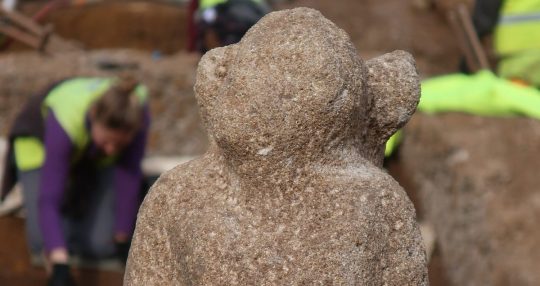
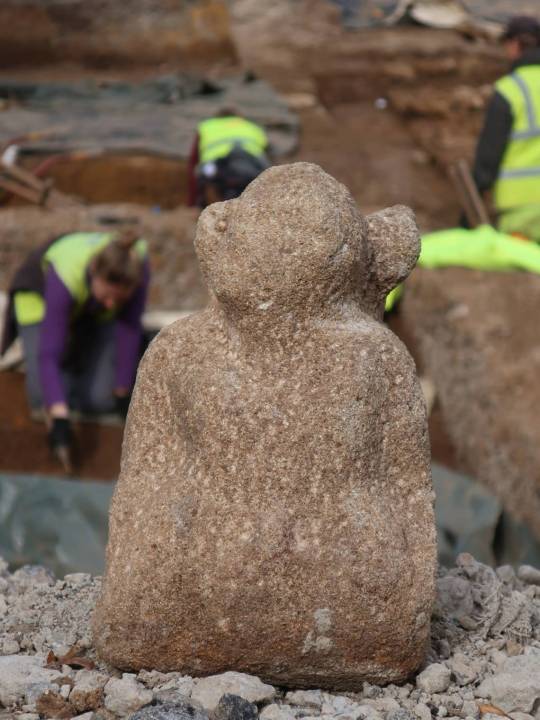
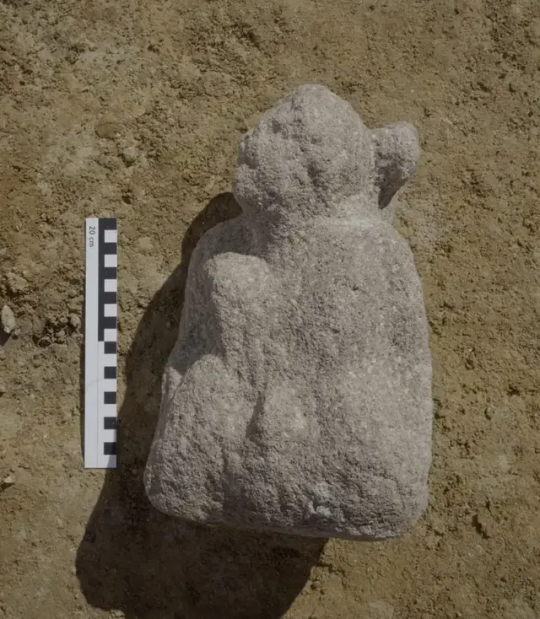
Jupiter columns “combine classical antiquity with probably Germanic beliefs,” Thiel explained. “Jupiter, throwing lightning bolts, rides on his horse over a figure crouching on the ground, usually naked and bearded, as can be seen, for example, in a group from Hausen an der Zaber in the Heilbronn district.” This specific example presented Jupiter as nature’s master, Thiel added.
“Every archaeologist is happy when a beautiful find is made,” he said. But, when the staff at the nearby Württemberg State Museum caught wind of the discovery, they remembered that most Jupiter columns included a Four Gods Stone at their base. “In the depot of the Württemberg State Museum there is a badly damaged Four Gods Stone with depictions of the Roman deities Mercury, Juno, Hercules and Minerva,” said the museum’s head of archaeology, Astrid Fendt. Mercury, Juno, and Minerva formed the Capitoline Triad of Gods. Although Juno wasn’t a fan of Hercules, the Hapsburg family did consider him a legitimate ancestor.
The museum’s Four Gods Stone surfaced in 1908 near a well on the edge of the same lot being excavated. “At the time, a large barracks was being built,” representatives for the city said. The find instigated a more exhaustive excavation. Thiel said that the figure they just found “could also have been lying there, but it probably escaped our colleagues at the time, which is not surprising.”
Crews will continue scouring the site for further artifacts through the end of May. “By then, the entire construction window will have been examined and all finds will have been recovered,” the city said. “We hope that it will soon be possible to show the little giant together with the relief of the gods in a special exhibition.”
By Vittoria Benzine.



#Stone Sculpture of a Roman ‘Giant’ Unearthed at Ancient Fort in Germany#Stuttgart Germany#stone statue#ancient artifacts#archeology#archeolgst#history#history news#ancient history#ancient culture#ancient civilizations#roman history#roman empire#roman art
24 notes
·
View notes
Note
Do u have any headcanons about Rome or the other ancients
i do! here are some of them:
Rome is the Italybros' father, not their grandfather. Children are sometimes bittersweet omens for nations; your beginning is a harbinger of someone else's end.
When he was still a republic, the Battle of Cannae during the Punic Wars against Carthage was the moment Rome most feared dying for real. As the Carthaginian general Hannibal proclaimed; "I swear to arrest the destiny of Rome with fire and steel"—that put some real fear into young Rome's heart.
Persia (aka the Achaemenid Empire) is at least 3,000 years old—they and modern Iran are the same person. Another ye olde helltalia, like China.
Germania's real name is not Germania: he is one of the many Germanic nations that existed; as historically, Tacitus' concept of "Germania" is more of a Roman construction—they didn't see themselves as a single unified "Germanic" cultural or political entity. So, Tacitus' Germania? Much like Herodotus: father of history, father of lies, perhaps...
Yao's earliest memory is of walking along the Yellow River. It's one thing he has in common with many other ancient nations; rivers feature heavily in their earliest sense of being: Rome (the Tiber), Sumer (the Tigris and the Euphrates), Ancient Egypt (the Nile) and Olmec (the Coatzacoalcos, in modern Mexico) being some examples. Yao thinks of the Yellow River as being both life and death; the fertile silt on the banks that would be the lifeblood of his civilisation, but also the source of devastating floods throughout his history.
Yao rather respected Rome, Persia/Iran and India a lot more than his other neighbours; Rome being called da qin(大秦)or "great qin". Almost a sort of "oh, there's another empire at the opposite end of the (then) known world just like me." Bit of a difference from how at various points, Yong-soo and Kiku got much less flattering names. Today, many things have crumbled under the sword of time, but there's still Roman glassware he has from that long-gone time of the Silk Road that linked Rome and China—as well as all the other cultures in between—together.
#hetalia#hetalia headcanons#hws rome#hws china#hws carthage#hws iran#hws persia#hws germania#hws india#hws ancient egypt#hws olmec#hws sumer
134 notes
·
View notes
Photo


The images above are from Annette Kelm’s photography exhibition Present Past Perfect at Andrew Kreps Gallery.
From the press release-
In her work, Kelm moves freely between studio, and documentary photography to explore the function and history of objects, as well as the implications of their representation. A series of new photographs document ephemeral still lives built in her studio, combining colored paper and cardstock backdrops, with vegetation and found objects. Ultimately, these contemporary Vanitas-like compositions are left open-ended, as Kelm discloses their constructed nature, as seen in works like Sumach / Essigbaum, 2023, where the edge of a table and curve of the backdrop suggest the provisional process of the works’ making. Through this strategy, Kelm explores the implications of the framing and display of objects, as well as the value systems in which they exist.
A new series of photographs documenting vintage button pins continue Kelm’s ongoing exploration into the graphic manifestations of protest. Adorned with slogans such as “Keep Abortion Legal” and “If his home is his castle, let him clean it”, each button pin is affixed to a uniformly cropped jean jacket. Sharing an overhead view, and a serial format, the varying placement of each button suggests the individuality of an imagined wearer, culminating in a crowded, all-over composition.
Kelm’s interest in the socio-cultural history of objects is evoked in her 2019 series Recyclingpark Neckartal, presented here for the first time in the United States. The series documents 14 travertine columns originally commissioned by the National Socialists from Lauster quarry in Stuttgart in the 1930s, as part of an unrealized monument to Benito Mussolin planned for “Germania”, the planned reconstruction of Berlin overseen by Albert Speer. Kelm captures these in multiple angles in their current location, a recycling center. Seen through trees and brush, the columns stand overshadowed by a towering waste incinerator, surrounded by parked cars and traces of activity. Together, these views suggest the often uneasy approach society takes to addressing its dark past.
#annette kelm#andrew kreps gallery#nyc art shows#photography#art#art shows#flowers#studio photography#spring#spring photography
2 notes
·
View notes
Note
The year is 117AD, you just inherited the Roman Empire at its absolute height of territory and power. What do you do to make certain it survives until modern times?
i'm not sure how much you want me to cheese it vs be realistic but i have some ideas.
reform, reform, reform....
first things first, revive the republic and reform the administration of the provinces. turn the empire into a quasi-federal republic with a mix of local and federal government. let's advance the creation of the "imperial" and "senatorial" provinces. amply assimilated provinces will be made into "senatorial" provinces and they will be given a greater degree of local government and they will elect their own governors and provincial senates. "imperial" provinces will be under the direct control of the consul/imperator/princeps/whatever and will be treated as military-occupied territories, being governed by military governors appointed by the federal government (the city of rome, which would be their equivalent of D.C.).
we also would establish /clear/ rules of succession/election. i'm not too concerned with the details, but since we're americanizing the roman empire i'd suggest some electoral process similar to what we have in america and establish some kind of senatorial electoral college that elects the consul and his co-consul. hopefully this will limit the occurrence of generals starting rebellions because they think they can just take the throne by force.
quite frankly, i would just codify the whole roman constitution and reform the legal code in general. streamline and modernize it. make the constitution resemble the american constitution as is reasonably possible, while still respecting traditional roman rights. but the important thing would be to establish civilian control of the military and outlining the election process.
i would also need to establish a national bank and start issuing fiat currency. have this national bank loan money at little to no interest to individuals, collegia, and other institutions, etc. whoever needs capital to invest in something. this fiat currency will be made the only legal tender in the empire.
speaking of investing, the roman government would be encouraged to invest in various infrastructure projects and internal improvements; roads, canals (build the suez canal), bridges, aqueduct, watermills, public schools, etc. also start subsidizing the construction of imperial academic institutions of higher learning. especially ones that are researching and development things like steam engines, windmills, agricultural efficiency, etc. start sponsoring geniuses and inventors and patronizing artists. "nationalize" the shipbuilding industry; starting pumping out a shit ton of boats (owning the seas is a top-priority) and include a shipbuilding university that studies and teaches sailing and shipbuilding and facilitates new innovations.
reform the tax system. both the kinds of taxes (like institute a land-value tax) but also the method of collecting them. introduce protective tariffs for critical industries.
deal with the parthians. just conquering them would be ideal but with conditions as they are in 117 AD i don't think this is practical. maybe in a few decades after all of my above mention policies have taken effect we'll be in a better position. but right now i think i'd be seeking peace and trying to normalize relations. establish the border at the euphrates. let them have mesopotamia as an act of good will. create some kind of trade agreement to maintain the flow of trade through the silk road. we need to end the wars in the east so we can focus on the north.
the north. brittania, germania, and dacia are the three big problem areas. i say we cut brittania loose. create a client kingdom, trade for their tin and silver, and also get some income from the import duties. fact is, brittania costs too much to hold right now. we can easily get the tin and silver through trade. we will conquer her another day. our focus should be on germania and dacia. move the british legions there. and i say we push the border to the elbe. it will actually shorten the border.
as for the germanic tribes. we play them off each other. divide and conquer. ally with some, fight the others. we settle our allies inside our territory and assimilate them. break them up and scatter them across the empire though. mandatory military service for them. you know the drill.
either abolish slavery or severely restrict it to the point that it will slowly die out over time. also abolish serfdom.
also land reform. start distributing lands in imperial provinces to soldiers and the urban poor (after being educated how to farm) and to newly integrated germanic citizens. this will both help with a more equitable distribution of land/wealth but also expedite the colonization and assimilation of these imperial provinces.
/actually/ persecute and exterminate christianity.
#these are the ideas that immediately come to mind#there are probably others#but i think this would give rome a fighting chance
0 notes
Text
Early Modernity & Germany.
Crises In The Making.

Geography: In Haffner's The Ailing Empire we see an entity strong enough for nationhood but not strong enough to establish an empire in the middle of Europe a fact not just rejected by Hitler & Kaier Wilhelm the 2nd but even by Otto Von Bismarck who got the ball rolling in the creation of a unified Germany. In other words while Germany was a strong nation it could only be an anemic empire if it decided to pursue any additional conquest post 1871 since it would now face the near certainty of a two front war it could ill afford to avoid or win. Yet Germany's lack of natural resources & physical space could only be acquired by annexing additional territory on the European continent or by overseas colonies which could only be transverse by the seas which were dominated by the British Royal Navy. For Germany war or 2nd billing seemed to be it's only prospects for the future. It made it's choice [1].

Culture: In Culture Of Despair Fritz Stern comments on how with the decline of religion and the meanings and value systems it once bestowed now hollowing out a number of German thinkers and artists looked to sacralize the newly formed German nation as the new religion of Germany largely not from pure nationalist sentiments but rather as a type of despair for the formerly solid German culture & beliefs systems of hierarchies, Christianity, & Natives. Germany's process of undergoing a type of mass culture by the late 19th century was undermining previous notions of German excellence such as in the realm of high culture & high education which previously was the exclusive preserve of the elite aristocratic & native German. The process of this new sense of decline and search for it's solution would push a number of German thinkers and artists towards extreme nationalist & nativist movements which glorified the a mythical unspoiled past, the decadent present and the threat posed by foreigners such as Jews & Marxists upon a still young & vitalist Germany these elements had to be purged in order for this Germany to live. [2].

History: In The Longing For Myth In Germany Willamson documents that by the Middle of the 18th century (largely Protestant) German historians, poets, & philosophers were beginning to collect previous pre-Christian German lores & legends Nibelungenlied and past historical figures & writings (Arminius, High Middle Ages poetry, Tacitus's Germania) in the name of constructing a larger German nationalist, awakening. Thus a number of German philosophers, artists & historians were quite consciously inventing Germany rather then “discovering it”. [3]. While attempting to turn the Nibelungenlied into a German Iliad would only catch legs by the early 19th century largely in reaction to France's numerous invasion into German states as a pro to-nationalist reaction. Other factors that created national identity were of course the role of Martin Luther who not only propagated the new faith Protestantism (whose popularity in the Northern German states distinguished them from much of still Catholic Europe) but also translated the Bible to German thus marrying new religious practice with also popularizing the German language as it was helping to form a board pro to-nationalist sensibility throughout the German states. [4]. Yet the stress of the Nibelungenlied caused other Germans to wonder if this was actual an attempt to remove “foreign” influences from the German national body (up to & including not just Jews & the classical world but also Christianity itself). [5].
[1] Haffner, Sebastian. The Ailing Empire: Germany from Bismarck to Hitler . Plunkett Lake Press. Kindle Edition. 2012. Originally 1987.
[2] The Politics Of Cultural Despair: A Study In The Rise Of The Germanic Ideology, Berkeley, University of California Press, 1961, 1963. By Fritz Stern.
[3] The Longing For Myth In Germany by George S. Willamson. Pg74-75. The University of Chicago Press. 2004.
[4]. Ibid, 84-85.
[5]. Ibid, 91-92.
1 note
·
View note
Text
Events 8.1 (before 1900)
30 BC – Octavian (later known as Augustus) enters Alexandria, Egypt, bringing it under the control of the Roman Republic.
AD 69 – Batavian rebellion: The Batavians in Germania Inferior (Netherlands) revolt under the leadership of Gaius Julius Civilis.
527 – Justinian I becomes the sole ruler of the Byzantine Empire.
607 – Ono no Imoko is dispatched as envoy to the Sui court in China (Traditional Japanese date: July 3, 607).
902 – Taormina, the last Byzantine stronghold in Sicily, is captured by the Aghlabid army, concluding the Muslim conquest of Sicily.
1203 – Isaac II Angelos, restored Byzantine Emperor, declares his son Alexios IV Angelos co-emperor after pressure from the forces of the Fourth Crusade.
1291 – The Old Swiss Confederacy is formed with the signature of the Federal Charter.
1469 – Louis XI of France founds the chivalric order called the Order of Saint Michael in Amboise.
1498 – Christopher Columbus becomes the first European to visit what is now Venezuela.
1571 – The Ottoman conquest of Cyprus is concluded, by the surrender of Famagusta.
1620 – Speedwell leaves Delfshaven to bring pilgrims to America by way of England.
1664 – Ottoman forces are defeated in the battle of Saint Gotthard by an Austrian army led by Raimondo Montecuccoli, resulting in the Peace of Vasvár.
1714 – George, Elector of Hanover, becomes King George I of Great Britain, marking the beginning of the Georgian era of British history.
1759 – Seven Years' War: The Battle of Minden, an allied Anglo-German army victory over the French. In Britain this was one of a number of events that constituted the Annus Mirabilis of 1759 and is celebrated as Minden Day by certain British Army regiments.
1774 – British scientist Joseph Priestley discovers oxygen gas, corroborating the prior discovery of this element by German-Swedish chemist Carl Wilhelm Scheele.
1798 – French Revolutionary Wars: Battle of the Nile (Battle of Aboukir Bay): Battle begins when a British fleet engages the French Revolutionary Navy fleet in an unusual night action.
1800 – The Acts of Union 1800 are passed which merge the Kingdom of Great Britain and the Kingdom of Ireland into the United Kingdom of Great Britain and Ireland.
1801 – First Barbary War: The American schooner USS Enterprise captures the Tripolitan polacca Tripoli in a single-ship action off the coast of modern-day Libya.
1834 – Slavery is abolished in the British Empire as the Slavery Abolition Act 1833 comes into force, although it remains legal in the possessions of the East India Company until the passage of the Indian Slavery Act, 1843.
1834 – Construction begins on the Wilberforce Monument in Kingston Upon Hull.
1842 – The Lombard Street riot erupts in Philadelphia, Pennsylvania, United States.
1849 – Joven Daniel wrecks at the coast of Araucanía, Chile, leading to allegations that local Mapuche tribes murdered survivors and kidnapped Elisa Bravo.
1855 – The first ascent of Monte Rosa, the second highest summit in the Alps.
1863 – At the suggestion of Senator J. V. Snellman and the order of Emperor Alexander II, full rights were promised to the Finnish language by a language regulation in the Grand Duchy of Finland.
1876 – Colorado is admitted as the 38th U.S. state.
1893 – Henry Perky patents shredded wheat.
1894 – The Empire of Japan and Qing China declare war on each other after a week of fighting over Korea, formally inaugurating the First Sino-Japanese War.
0 notes
Text
A new axis? Wouldn't be a surprise in these times. The west seeks confrontation with China and it will have if they continue on this road.
The post is machine translated
Translation is at the bottom
The collective is on telegram
⚠️ GERMANIA E GIAPPONE SI UNISCONO CONTRO LA CINA, ASSE 2.0? ⚠️
🇨🇳 Nel mentre il Governo Cinese, guidato da Xi Jinping, lavora per la Pace, per la costruzione di un Mondo Multipolare e di un Vero Multilateralismo (真正的多边主义), la Germania e il Giappone Neo-Militarista si riavvicinano, per rafforzare gli scambi sia in ambito economico che in ambito militare in funzione anti-Cinese ⚔️
🤔 Germania e Giappone, nuovamente unite contro una potenza socialista. Cosa vi ricorda? 🤔
Scholz e Kishida, invece di indugiare nell'avventurismo anti-Cinese e anti-Comunista, dovrebbero ricordarsi cosa è successo l'ultima volta che i loro due Paesi si sono "uniti nel settore della Difesa" - più passa il tempo, e più sembra che la Germania si stia ritrasformando nella Germania nazista e che il giappone si stia attrezzando per tornare all'impero giapponese|
🤮 Il Governo Tedesco e il Governo Giapponese sono accomunati dall'aver avuto sul loro territorio i due peggiori regimi nella storia dell'umanità, dal Nazismo Hitleriano delle camere a gas al Militarismo Giapponese dell'Unità-731 e del Massacro di Nanchino 🤢
🔍 Per chi volesse approfondire, può rifarsi a questi post del Collettivo Shaoshan:
🔺Mao Ning: "Il Giappone deve riflettere sulla sua lunga storia di aggressioni e rispettare le preoccupazioni per la sicurezza dei suoi vicini asiatici" 🇨🇳
🔺La Repubblica Popolare Cinese commemora le vittime del Massacro di Nanchino ad opera dei militaristi giapponesi
🌸 Iscriviti 👉 @collettivoshaoshan
⚠️ GERMANY AND JAPAN UNITE AGAINST CHINA, AXIS 2.0? ⚠️
🇨🇳 While the Chinese Government, led by Xi Jinping, works for Peace, for the construction of a Multipolar World and True Multilateralism (真正的多边主义), Germany and Neo-Militarist Japan are getting closer again, to strengthen exchanges both in the economic and military fields in an anti-Chinese function ⚔️
🤔 Germany and Japan, united again against a socialist power. What does it remind you of? 🤔
Scholz and Kishida, instead of indulging in anti-Chinese and anti-Communist adventurism, should remember what happened the last time their two countries "joined in the defense sector" - the more time passes, the more it seems that Germany is transforming back into nazi Germany and that Japan is gearing up to return to the Japanese empire.
🤮 The German Government and the Japanese Government are united by having had the two worst regimes in the history of humanity on their territory, from the Hitlerian Nazism of the gas chambers to the Japanese Militarism of Unity-731 and the Nanjing Massacre 🤢
🔍 For those who want to learn more, you can refer to these posts from the Shaoshan Collective:
🔺Mao Ning: "Japan must reflect on its long history of aggression and respect the security concerns of its Asian neighbors" 🇨🇳
🔺The People's Republic of China commemorates the victims of the Nanjing Massacre by Japanese militarists
🌸 Subscribe 👉 @collettivoshaoshan
#socialism#china#italian#translated#china news#communism#collettivoshaoshan#xi jinping#marxism leninism#marxist leninist#marxismo#marxist#marxism#western imperialism#japanese militarism#japan#germany#olaf scholz#fumio kishida#chinese communist party#socialismo#socialist#news#diplomacy#japanese imperialism#imperialism
0 notes
Text
Gestr. tl bedeutung

#Gestr. tl bedeutung serial number
#Gestr. tl bedeutung code
( (kpl.) bestehend aus.) Diese Zeichnungsnummer kennzeichnet eine Baugruppe, welche aus technischen Gründen nicht immer vormontiert wird. Numéro de machine gedruckt printed Imprimé
#Gestr. tl bedeutung code
of year of construction Dernier chiffre de l’année Code für Hersteller Manufacturer`s code Code constructeur Code für Ersatzteilliste Spare parts list code Code pour la liste des pièces de rechange Code für Sprachen Language code Code pour la langue Kostenträger / Maschinentype Product unit / Machine type Code machine / Modèle de machine Info for the title page Info concernant la page de garde Fortlaufende Überarbeitung / Baujahr Continual improvement / Year of construction Numéro de la version / année de construction Baujahr Endzahl Last no. PÖTTINGER GMBH Servicezentrum Spöttinger-Straße 24 Postfach 1561 D-86 899 LANDSBERG / LECH PÖTTINGER GMBH Stützpunkt Nord Steinbecker Strasse 15 49509 Recke Sie erreichen uns in der BRD: Voici notre adresse en Allemagne: Our address in Germany: In Germania potete mettervi in contato con noi: In questo modo risparmierete delle spese e Vi assicurerete un attrezzo pronto all’uso per il raccolto.Īlois Pöttinger Maschinenfabrik Gesellschaft m.b.H A-4710 Grieskirchen E perci’ o consigliabile organizzare accuratamente ogni ordi-nazione, specialmente se fatta per telefono. L’acqurente sera responsabile di eventuali errori nel fornimento, qualora doveresso risultare da indicazioni non complete. Sie erreichen uns in Österreich: Voici notre adresse en Autriche: Our address in Austria: In Austria potete mettervi in contato con noi:Ĥ. This will save you money and ensure that your machine is fully operational for the harvesting season. If possible, have your machine repaired (should this be necessary) during the winter. Particularly when ordering by phone, prepare data carefully beforehand. The customer is responsible for any mistakes in filling orders that may result providing insufficient information. del pezzo la denomiazione e la quan desiderata.Ĥ. Evidenziare l’articolo desiderato col no. di fabbricazione dell’attrezzo (evidenziato sull etichetta). Quote order code, description and quantity required for each item ordered.ģ.
#Gestr. tl bedeutung serial number
Quote machine type, year of manufacture and serial number (punched in data plate). indirizzo, l’ufficio postale e la stazione meta. Give exact details of address/nearest post office/railway station. Utilizzate esclusivamente pezzi ricambio originale.Ģ. Vous épargnez ainsi des frais et votre machine sera prête au moment de la recolte.ġ. Faites executer si possible en hiver les réparations éventuellement nécessaires. Sie ersparen sich dadurch Kosten und sichern sich für die Ernte ein einsatzbares Gerät.ĥ. Lassen Sie allfällige Reparaturen an Ihrer Maschine möglichst in den Wintermonaten durchführen. Préparez donc soigneusement surtout les ordres téléphoniques.ĥ. Le donneur d’ordre est responsable d’éventuelles fausses livraisons résultant d’indications incomplètes. Bereiten Sie daher besonders telefonische Bestellungen sorgfältig vor.Ĥ. Für eventuelle Fehllieferungen, die aus unvollständigen Angaben resultieren, ist der Auftraggeber verantwortlich. Indiquez la pièce à commander par son numéro, sa désignation et le nombre désiré.Ĥ. Veuillez mentionner le type, l’année de construction et le numéro de fabrication de la machine (gravés sur la plaquette). Den zu bestellenden Teil mit Teil-Nr., Benennung und benötigter Stückzahl anführen.ģ. Type, Baujahr und Fabrikationsnummer der Maschine (am Typenschild eingeschlagen) angeben. Veuillez indiquer exactement votre adresse, le bureau postal et la gare destinatrice. Machen Sie genaue Angaben über Anschrift, Postamt und Zielbahnhof. Verwenden Sie nur Original-Ersatzteile.Ģ.

0 notes
Photo

Canon EOS 250D Taken on 18/06/2022. * The Great St. Bernard Pass is one of the highest of the Alpine frontier passes, at 2,469 metres above sea level. It lies on the Italian–Swiss border east of the Mont Blanc group in the southwestern Pennine Alps. A road through the pass was not mentioned until 69 CE, when the military arrangement of the Roman province of Germania rendered its construction desirable. This pass was historically the most important trane-Alpine route and was used by Napoleon and his 40,000 troops in 1800. 𝗛𝗼𝘄 𝘁𝗼 𝗴𝗲𝘁 𝘁𝗵𝗲𝗿𝗲: 🚆 Take the train from Turin to Aosta. 🚌 Then catch a bus heading for the Colle del Gran San Bernardo, run by 'SAVDA' between June and September. ______________________________________ #GreatStBernardPass #ColleDelGranSanBernardo #GranSanBernardo #ColDuGrandSaintBernard #Suiza #Switzerland #Schweiz #Italia #Italy #Alps #Alpi #Aosta #ValdAosta #ValledAostaImmaginiEmozioni #ValledAosta #LiveItalian #Italien #Suisse #VisitSwitzerland #NatGeoTravel #RoughGuides #LonelyPlanet #EarthPix #EarthFocus #MotherNature #LandscapePhotography #PaesaggiItaliani #Landscape_Lovers #LandschaftsFotografie #AostaValley (at Colle del Gran San Bernardo) https://www.instagram.com/p/ChyGSSLqal3/?igshid=NGJjMDIxMWI=
#greatstbernardpass#colledelgransanbernardo#gransanbernardo#coldugrandsaintbernard#suiza#switzerland#schweiz#italia#italy#alps#alpi#aosta#valdaosta#valledaostaimmaginiemozioni#valledaosta#liveitalian#italien#suisse#visitswitzerland#natgeotravel#roughguides#lonelyplanet#earthpix#earthfocus#mothernature#landscapephotography#paesaggiitaliani#landscape_lovers#landschaftsfotografie#aostavalley
0 notes
Photo

The Rise and Fall of The Praetorian Guard
THE PRAETORIAN GUARD WERE AN ELITE UNIT WITHIN THE IMPERIAL ARMY, SERVING PRIMARILY AS PERSONAL PROTECTORS AND INTELLIGENCE OPERATIVES FOR THE ROMAN EMPERORS.
The roots of the guard can be found during the Roman Republic, when soldiers served as protectors for Roman generals and important figures, or as elite guards for military praetors.
High-ranked generals with imperium held public office by serving as a magistrate or promagistrate. They were assigned a civil servant, lictors, to serve as an attendant and bodyguard. Where no personal bodyguard was assigned, senior field officers safeguarded themselves with temporary bodyguard units of selected soldiers.
Around 40 BC, Octavian, who would later become Emperor Caesar Augustus, installed praetorians within the pomerium (a religious boundary around the city of Rome), the first example of troops being permanently garrisoned in Rome proper.
Members of the guard accompanied Augustus on active campaigns, protecting the civic administrations and rule of law. At camp, the cohors praetoria (a cohort of praetorians guarding the commander), were posted near the praetorium, the tent of the commander, which the guard is believed to be named after.
After the construction of Rome’s Praetorian camp known as the Castra Praetoria around 23 BC, their role extended to escorting the emperor and the members of the imperial family, and to serve as a policing force during times of riot.
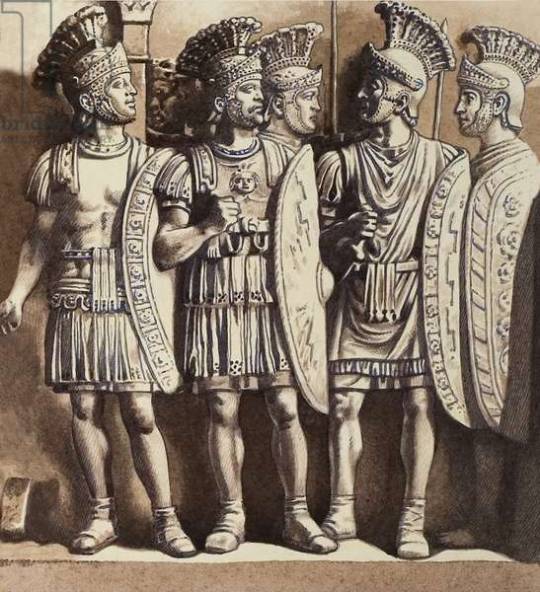
According to the Roman historian and politician, Tacitus, the guard around this time numbered nine Praetorian cohorts (4500 men, the equivalent of a legion), however, an inscription from near the end of Augustus’s rule suggests that their numbers were briefly increased to twelve.
The Praetorian Guard, like all legionaries, shared similar insignia, mainly on their shields. Praetorian Guard shields included wings and thunderbolts, referring to Jupiter, and also uniquely included scorpions, stars and crescents.
The first military engagement of the Praetorian Guard took place during the mutinies of Pannonia and the mutinies of Germania. Drusus Julius Caesar, son of Tiberius, accompanied by two Praetorian cohorts, the Praetorian Cavalry, and Imperial German Bodyguards, suppressed the mutinies of Pannonia. Germanicus, later known as Germanicus Julius Caesar, led a force of legions and detachments of the Praetorian Guard in a two-year campaign in Germania against the uprising.
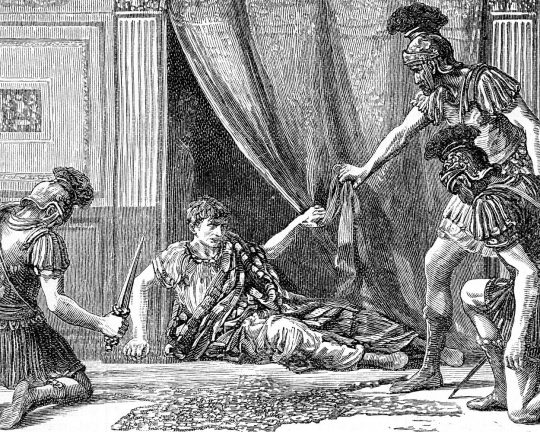
In the three centuries that followed, the guard influenced imperial politics by overthrowing emperors and proclaiming the successor. Members of the guard were also directly involved in the assassination of emperors, such as: Aurelian, Balbinus, Caligula, Caracalla, Commodus, Elagabalus, Galba, Pupienus, Pertinax, Philip II, and Probus.
In AD 305, Diocletian and Maximian abdicated, and the former Caesares, Constantius and Galerius became Augusti. Although two sons of emperors, Constantine I and Maxentius were eligible, they were passed over for a new tetrarchy, and Valerius Severus and Maximinus Daza were appointed Caesars.
Severus planned to disband the Praetorian Guard on the orders of Galerius, resulting in the guard giving their allegiance to Maxentius and proclaiming him emperor. By AD 312, Constantine I marched on Rome with a force of 40,000 soldiers to eliminate Maxentius, facing off against an army that encompassed the bulk of the Praetorian Guard garrisoned in Rome at the Battle of the Milvian Bridge on the River Tiber.

Contemporary accounts record Maxentius’s forces being pushed back against the river and retreating across the bridge. The weight of soldiers fleeing caused the bridge to collapse, stranding elements of the guard on the northern bank of the river who were either killed or taken prisoner.
Lucius Caecilius Firmianus, a Christian author and advisor to Constantine recorded the events: “The bridge in his rear was broken down. At sight of that the battle grew hotter. The hand of the Lord prevailed, and the forces of Maxentius were routed. He fled towards the broken bridge; but the multitude pressing on him, he was driven headlong into the Tiber [drowned].”
Maxentius’ body was fished out of the Tiber and decapitated, and his head was paraded through the streets of Rome. Supporters of Maxentius were eliminated and the Praetorian Guard and Imperial Horse Guard were disbanded. The remaining guard were sent in exile to the corners of the empire, and the Castra Praetoria was dismantled in a grand gesture that marked the end of the Praetorians.
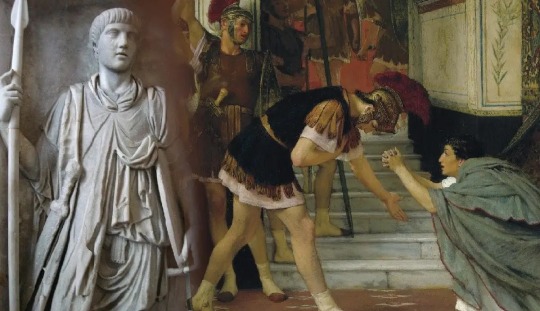
#The Rise and Fall of The Praetorian Guard#The Imperial Army#The Imperial Guard#The Roman Legion#history#history news#ancient history#ancient culture#ancient civilizations#ancient rome#roman history#roman empire#roman emperor#long post#long reads
81 notes
·
View notes
Text
Parlamento Tedesco Reichstag.
Parlamento Tedesco Reichstag, Reichstag, BundestagDome di Norman Foster architect
Parlamento Tedesco Reichstag © ANTONINO BARTUCCIO 2019
Parlamento Tedesco ReichstagStampa Fina Art cm 50×70
Spedizione compresa.155,00 €
Interested in running this feature in your publication?Contact us to see more images and discuss reproduction rights
Sei interessato a comprare questa foto? scrivici…

View On WordPress
#Architecture#Berlino#Built Structure#Bundestag Dome#ceiling#Construction Industry#design#Flare#Foster architect#futuristic#germania#glass#Indoors#Inside Of#material#metal#modern#new#Parlamento#Parlamento Tedesco#Reichstag#steel#TRAVEL PHOTOGRAPHY#Window
0 notes
Photo

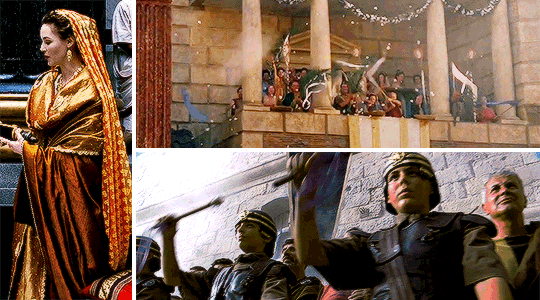


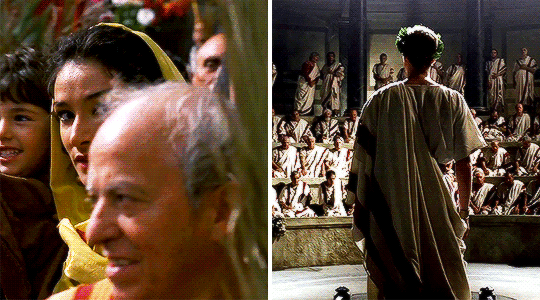
FAVORITE ERA 2/? ➜ THE ROMAN EMPIRE
They have plundered the world, stripping naked the land in their hunger… they are driven by greed, if their enemy be rich; by ambition, if poor… They ravage, they slaughter, they seize by false pretenses, and all of this they hail as the construction of empire. And when in their wake nothing remains but a desert, they call that peace. - TACITUS, THE AGRICOLA AND GERMANIA
#the roman empire#history#ancient history#perioddramaedit#historyedit#periodedit#userperioddrama#roman empire#hbo rome#rome hbo#gladiator#movie: gladiator#connie nielsen#indira varma#onlyperioddramas#tacitus#cornelius tacitus#roman history#gifs: mine#to try and sum up 300 years (if you are going with the unified roman empire and not when it splits and because east and west) is daunting#but I just felt like continuing on with the favorite era thing.#kinda fun#I also REALLY love that yellow outfit Indira wears for like 2.5 seconds in Rome it is gorgeous#ALSO the quote perfectly sums up the decayed state of Rome as an empire that stretched itself too far and was just an utter destructive#....destructive force during this time.#always a favorite time in history to me because so much was happening and shifting and it is also a set up for the middle ages
833 notes
·
View notes
Text
James Fitzgender, or the Story of the Carnivale Costume

James Fitzjames enters the story as the hegemonic masculinity poster boy. He has it all: war stories, heroism, good looks, a shiny uniform, and his superior’s love. Throughout the story, he stays in control where Francis fails, and then once he has the expedition entire under his command, he climbs down into the belly of the ship to put on a dress and call himself Britannia. I love that for him.

James Fitzjames, illustrating hegemonic masculinity over dinner in the Terror wardroom gender studies seminar.
What’s the deal with Fitzjames’s carnivale costume and why am I so obsessed with it?
James dresses up as Britannia, the national personification of the British empire. National personifications are what it says on the tin—the nation personified; really kicked off as a trend in 19th century Europe. Most famous to British readers (and most relevant to our discussions) is Britannia, Americans are probably familiar with seeing their nation represented by the Statue of Liberty (or, less famously nowadays, Columbia). Germans know Germania, the Swiss Helvetica. In the European context, they are almost exclusively young & female (to symbolize the health and purity of the nation), armed (to show the readiness of the nation to defend itself) and garbed in neo-classical dress (to harken back to democratic traditions that supposedly reach back to time immemorial, Höpflinger, 2015).

Britannia, selling toothpaste (presumably because she has nothing better to do) vs. James Fitzjames, wearing his costume. Britannia picture from McClintock (1995).
It’s important to note they’re personifications of the nation—this abstract construct of a group of people that feels like they all have something in common because they live in a certain place, share a certain language and culture, etc. It’s important because—unlike citizenship—one’s nationality is something that is less likely to change in one’s lifetime, certainly if one takes an ethnic view of nationality (as was very common when all these girls were in their prime & is still very prominent in many nations today). There are some nations with less rigid criteria for membership, but the truth is, the border of who belongs and who doesn’t in a nation is pretty fixed (even if you can become a citizen of a country, it may be harder for you to be seen as a legitimate member of a nation that lays claim to that country).
National personifications sum up everything that the members of the nation feel they have in common. They’re unifying figures, but since nationality is such a rigid concept, it means they’re also pretty clear on who’s excluded. A nation’s membership is less often policed at the actual border (though that’s certainly a factor of it), and more often policed in daily interactions where every single person decides who seems like they belong and who doesn’t. Nira Yuval-Davis calls it ‘everyday bordering’ (Yuval-Davis et al., 2018, p. 229): “the everyday construction of borders through ideology, cultural mediation, discourses, political institutions, attitudes and everyday forms of transnationalism”. To sum up, nationality is 1) hard to change and 2) often called forth in daily interactions within the nation.
So the de facto expedition commander puts on a costume of the British nation. Pretty straightforward, right? Well, the moment James puts on the costume, it signals that there’s something more going on with him.

James Fitzjames, using a national personification for its intended purpose, ca. 1848.
At first glance, it’s very much in keeping with his theme (both the neo-classical allusion in keeping with his ‘Caesar, crossing the Rubicon’ story and the aggressively nationalist nature of his costume as a continuation of his imperial ambitions). But it is a transgression in two parts (as we learn later): one of gender, and one of nationality.
The gender aspect is clear—if anything, the dress scene where he chooses his costume drives it home. We’re all rooting for him to put on a dress and let loose. Who doesn’t love to do drag?
The nationality aspect is what we in German call a Treppenwitz, a joke that you only think of when the opportunity to make it has passed. And, much like a Treppenwitz, we get that James is actually hilarious once he tells Francis he’s ‘not even fully English’: Not only is he doing gender drag, he’s also doing nationality drag.
It’s somewhere in the Battersby biography of Fitzjames that he notes it’s telling how comfortable the man was maintaining a disguise. Putting on a Britannia costume is the logical extension, perhaps the most extreme version of that penchant for disguise: it’s the one he has worn all his life, albeit with an ironic twist. Another moment in the Battersby biography, he talks about how choosing the pen name ‘Tom Bowline’ is a clever allusion to his illegitimacy, and the Britannia costume feels like a version of that.
Britannia isn’t a leadership figure. She’s meant to lead, at most, through inspiration. National personifications are not political leaders in the concrete sense of enacting policy, but rather stand for the nation’s ideals. They’re utopian, in the sense that Höpflinger (2015) cites: “[…] if we define utopia with Georg Kateb as: an ideal society which is not an efflorescence of a diseased or playful or satirical imagination, nor a private or special dream-world, but rather one in which the welfare of all its inhabitants is the central concern, and in which the level of welfare is strikingly higher, and assumed to be more long-lasting, than that of the real world.” (And yes, I have many thoughts about the juxtaposition of the dream-world of carnivale and the concrete concern for the welfare of the sailors that James had in organizing it—but I digress.)
In practice, national personifications need concrete, political leadership. They’re propaganda tools, but somebody has to harness all that sentiment. Francis’s absence has left the post of leadership vacant. Instead of inserting himself into that vacancy, however, Fitzjames chooses Britannia, the abstract representation of what they all have in common, thereby leaving Francis’s seat untouched (he leaves the fatherly role of leader to Francis and takes on the representation of motherland.) So even in a moment where he has no reason to leave room for Francis, he does, which I think is beautiful, but also makes me wonder what he thought his capacity for leadership actually is at that point in the show.

Standing by the political leadership figure as personification of the nation.
At the same time, while the putting on of the costume requires a transgression of boundaries, it’s also a transcendence of boundaries. National personifications became popular at a time when religious symbols often no longer sufficed to bind together nation-states, but the community, in the words of Anderson (1989), still had to be imagined. The nation in the form of a young (armed) woman fulfilled that purpose, allowing the visualization of a collective beyond religious or class lines. Similarly, James’s costume is something that allows the sailors to come together at a time when divisions are mounting within the crew.

Bringing the nation together.
The costume is also the signal that something is about to change. Someone pointed out that the Britannia costume allows James to wear a helmet, concealing his hairline, where he has started bleeding. His first, tentative acknowledgment of his complicated place in the nationalist project is what leads to him opening himself up to Francis later, in a story where illness is transformative. As I put it in another essay: At the end of vanity, we come to the end of hegemonic masculinity.
Nationalism is deeply gendered. McClintock, (1995, p. 353) notes: “All nations depend on powerful constructions of gender. Despite many nationalists' ideological investment in the idea of popular unity, nations have historically amounted to the sanctioned institutionalization of gender difference.” At the level of individual identity, similarly, our gender determines our relationship to the nation. James’s drag as Britannia calls attention to the fact that something’s not as it should be—a boundary is being crossed, and gender is the most obvious one. But his costume choice also illustrates his complex relationship with the nation that sent him to this desolate place, and his hope for his position in the expedition when Francis returns.
Bibliography
Anderson, B., 1989. Imagined communities: Reflections on the Origin and Spread of Nationalism. Verso, London.
Hancock, A.M., 2017. “New Motherlands”: Nineteenth-Century South American National Personifications (Dissertation). Purdue University, West Lafayette, Indiana.
Höpflinger, A.-K., 2015. Imagining a Nation. The Civil-Religious Role of Female State Personifications, in: Religion in Cultural Imaginary. Explorations in Visual and Material Practices. Nomos, Berlin, pp. 55–77.
McClintock, A., 1995. Imperial Leather. Race, Gender, and Sexuality in the Colonial Contest. Routledge, New York/London.
Wintle, M., 2008. Personifying the Past: National and European History in the Fine and Applied Arts in the Age of Nationalism, in: Narrating the Nation: Representations in History, Media and the Arts. Berghahn Books, pp. 222-.
Yuval-Davis, N., Wemyss, G., Cassidy, K., 2018. Everyday Bordering, Belonging and the Reorientation of British Immigration Legislation. Sociology 52, 228–244.
436 notes
·
View notes